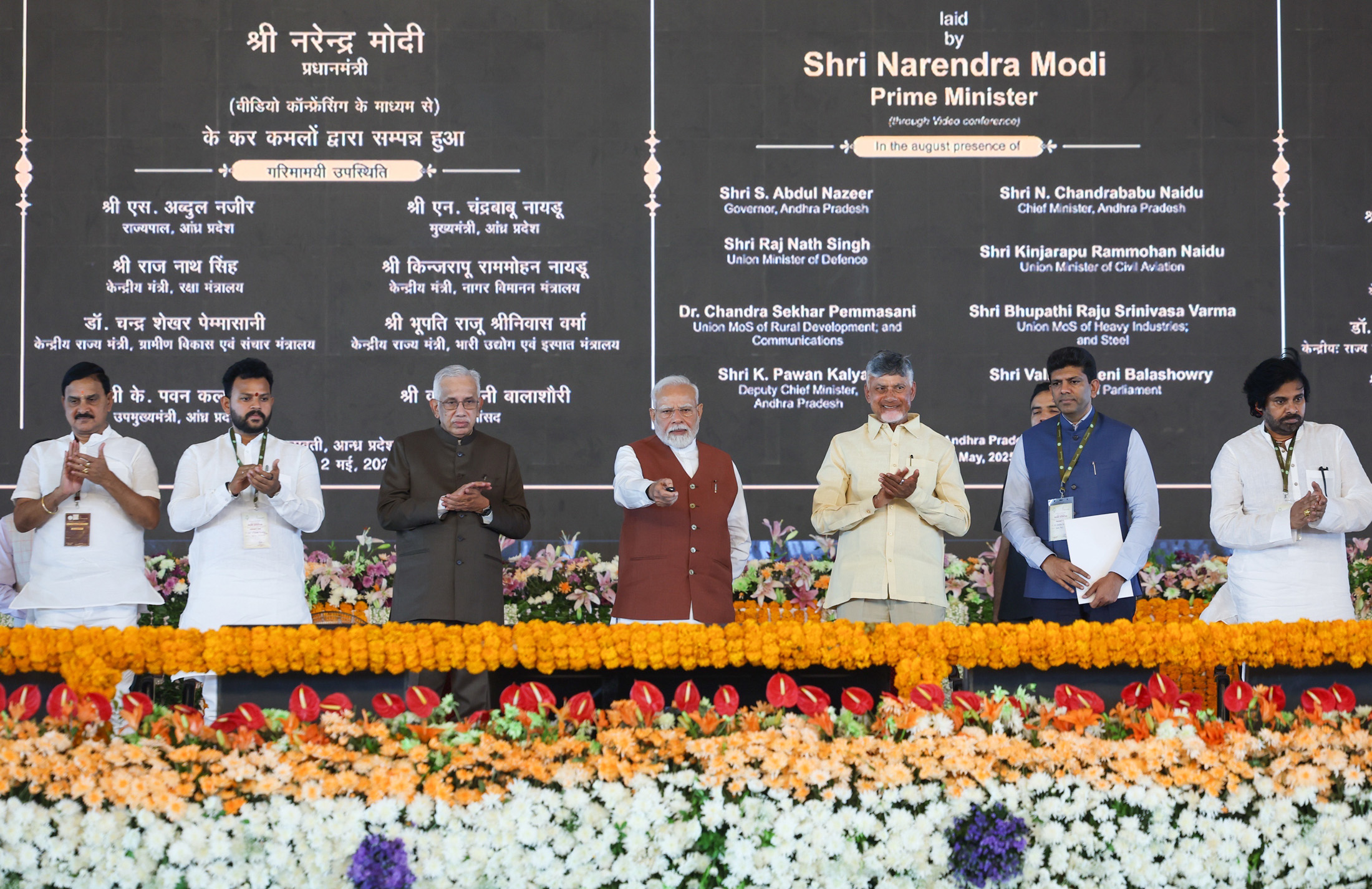- Courses
- GS Full Course 1 Year
- GS Full Course 2 Year
- GS Full Course 3 Year
- GS Full Course Till Selection
- Online Program
- GS Recorded Course
- NCERT (Recorded 500+ Hours)
- Polity Recorded Course
- Geography Recorded Course
- Economy Recorded Course
- AMAC Recorded Course
- Modern India, Post Independence & World History
- Environment Recoded Course
- Governance Recoded Course
- Science & Tech. Recoded Course
- International Relations and Internal Security Recorded Course
- Disaster Management Module Course
- Ethics Recoded Course
- Essay Recoded Course
- Current Affairs Recoded Course
- CSAT
- 5 LAYERED ARJUNA Mentorship
- Public Administration Optional
- ABOUT US
- OUR TOPPERS
- TEST SERIES
- FREE STUDY MATERIAL
- VIDEOS
- CONTACT US
MAHATMA GANDHI’S 154TH BIRTH ANNIVERSARY
MAHATMA GANDHI’S 154TH BIRTH ANNIVERSARY
03-10-2023
Latest Context
Mahatma Gandhi's 154th birthday, October 2, 2023, was commemorated nationwide to honour his values and aspirations that continue to motivate the people.
How did Mahatma Gandhi Become a Permanent Feature on Legal Banknotes of India?
-
The Origins of Gandhi’s Image on Indian Currency:
- Gandhi's image that appears on banknotes is a cutout from a photograph that was shot in 1946 of him standing next to British politician Lord Frederick William Pethick-Lawrence.
- The picture was chosen because Gandhi's smile was captured in the most appropriate way in it; the portrait is a reflection of the cut-out.
- The central government must approve "the design, form, and material of banknotes" after taking the central board's suggestions into account, according to Section 25 of the RBI Act, 1934.
-
Gandhi’s First Appearance on INR notes:
- Gandhi made his debut on Indian banknotes in 1969, when a special series was released to mark the 100th anniversary of his birth.
- Then, in October 1987, a line of Rs. 500 banknotes with Gandhi's image was introduced.
- Gandhiji is a Constant Icon on Banknotes:
- Gandhi was chosen due to his widespread appeal, and the RBI introduced the new "Mahatma Gandhi Series" in 1996 to replace the previous Ashoka Pillar bank notes.
- A windowed security thread, latent images, and intaglio features for the blind were among the security elements that were added.
What are Mahatma Gandhi’s Lessons on Sustainability?
-
Simplicity and Minimalism:
- Gandhi promoted a straightforward, uncomplicated way of life. He held that people should consume less than they really need to and should live simply.
- Simple living, or "Sarvodaya," encourages resource conservation and a smaller ecological footprint.
-
Self-Sufficiency:
- Gandhi emphasised the value of community-level self-sufficiency. He advocated for villages to be self-sufficient in terms of food, clothes, and other necessities.
- This strategy minimises the environmental effects of long-distance trade and transportation while reducing reliance on outside resources.
-
Nonviolence (Ahimsa):
- Gandhi's nonviolent philosophy encompasses not only how we treat one another but also how we treat the environment and all other living things. He was a vegetarian and supported the humane treatment of animals.
- This demonstrates his care for the welfare of all living things and the significance of living in harmony with nature.
-
Sustainable Agriculture:
- Gandhi promoted organic and sustainable farming methods. He pushed for the use of organic agricultural practises that retain soil fertility and lower the need for chemical inputs, such as crop rotation and the use of natural fertilisers.
-
Conservation of Resources:
- Gandhi placed a strong emphasis on the wise use and preservation of natural resources, including forests and water.
- He supported environmental preservation and restoration in order to guarantee that future generations may utilise these resources.
-
Localism and Decentralization:
- Gandhi supported the decentralisation of authority and control over resources. He supported giving local communities more power so they could better understand their own demands for sustainability and the environment.
-
Swadeshi:
- Gandhi supported the Swadeshi movement, which advocated the use of products and resources made locally.
- This idea aimed to enhance regional economies and lessen the negative effects of long-distance trade on the environment.
-
Respect for Nature:
- Gandhi firmly believed that people should respect and revere nature.
- He advocated for good care of the environment and considered nature as an integral aspect of human life.
-
Vasudhaiva Kutumbakam:
- He instilled in us the concept that we are all members of the same family and that we should always be aware of global issues through his belief in Vasudev Kutumbakam (the entire world is one family).
What is the Relationship of Mahatma Gandhi’s Idea of Politics with Music?
-
Bhajans and Religious Music:
- Gandhi had a deep spiritual side, and he frequently turned to devotional music, such bhajans (Hindu religious songs), to connect with that half of himself and find comfort.
- He felt that singing religious songs and hymns helped to purify the mind and deepen one's relationship with God.
-
Inspirational Songs:
- Gandhi promoted the use of motivational and nationalistic songs to bring people together in the fight for independence.
- His favourite songs, including "Raghupati Raghava Raja Ram" and "Vaishnav Jan To," were frequently sung during his prayer sessions and other public events.
-
Fasting and Silence:
- Gandhi occasionally fasted and kept silent for extended periods of time as a gesture of protest or self-purification.
- He frequently used written notes to interact with others at this time, as well as music to express his sentiments.
-
Community Bonding:
- During Gandhi's nonviolent initiatives, music was a key factor in uniting communities.
- Chants, chants, and music helped the participants in many campaigns, including the Salt March, feel unified and supportive of one another.
-
Promotion of Folk Music:
- Gandhi supported preserving folk music and art forms as well as traditional Indian culture.
- He promoted the use of regional languages and music to reach the general public because he thought they were more relatable and approachable.
-
Role in Nonviolent Resistance:
- Gandhi's nonviolent resistance movements included music as a key component. It served to elevate spirits during trying times, inspire and mobilise people, and build a feeling of communal identity.
-
Advocacy for Simplicity:
- Gandhi's simplicity and minimalism-based aesthetic extended to music. He loved pleasant, straightforward music that the average person could easily understand and enjoy.
Q1. Who among the following is associated with ‘Songs from Prison’, a translation of ancient Indian religious lyrics in English? (2021)
(a) Bal Gangadhar Tilak
(b) Jawaharlal Nehru
(c) Mohandas Karamchand Gandhi
(d) Sarojini Naidu
Ans: (c)



